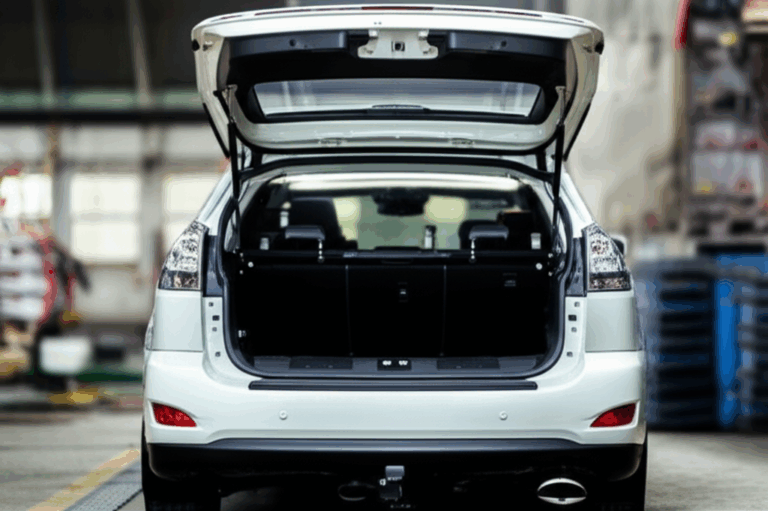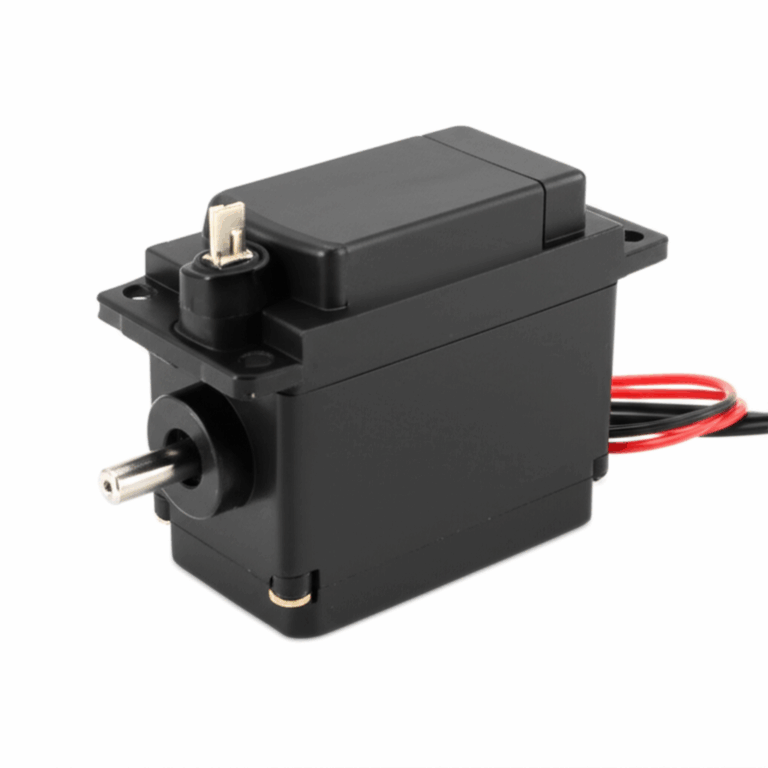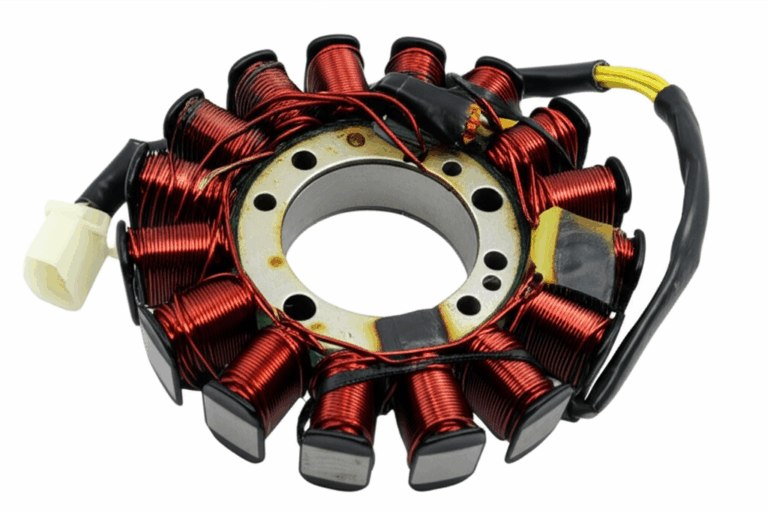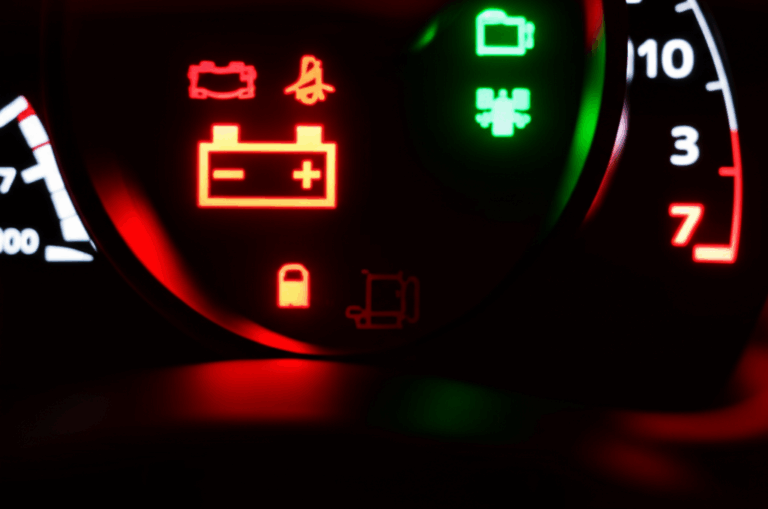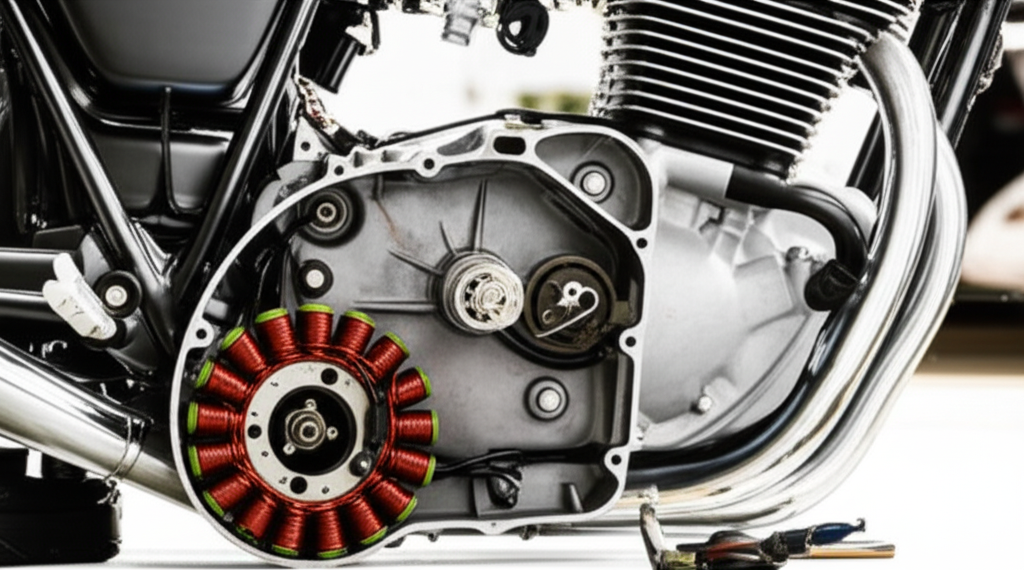
Can a Motorcycle Run Without a Stator? Understanding Your Bike’s Electrical Lifeline
- Table of Contents
- Introduction: The quick answer and why it matters
- What exactly does a motorcycle stator do
- The direct answer: Running on battery power alone
- How long will a motorcycle run on battery alone
- Battery capacity
- Electrical load
- Battery condition
- Riding conditions
- Realistic run-time estimates
- Symptoms of a failing or dead stator
- Risks and dangers of riding with a bad stator
- What to do if your stator fails while riding
- Basic troubleshooting and testing your stator
- Battery voltage checks
- Stator AC output test
- Stator resistance and insulation tests
- When to suspect the regulator/rectifier instead
- Stator replacement: DIY vs professional mechanics
- Preventative maintenance for your charging system
- Conclusion: Don’t ride without your stator’s support
- FAQs
Introduction: The quick answer and why it matters
Can a motorcycle run without a stator? Yes. For a short stretch. In my experience it behaves like a phone when you yank the charger from the wall. It keeps working for a while then it fades out fast.
I learned this the hard way on a chilly evening when my Honda’s dash started to look like a candle at the end of its wick. The engine stumbled at a light. The headlight went dull. I made it two miles to a gas station on battery alone then the party ended. That ride taught me how the stator anchors the entire charging system. It also taught me to carry a compact multimeter and to stop guessing.
If you ride a Yamaha or a Suzuki or a Ducati or a BMW Motorrad or a Triumph or a Kawasaki or a Harley-Davidson or an Indian Motorcycle the core idea is the same. The stator feeds the battery and your electrical system. When it fails the clock starts ticking.
What exactly does a motorcycle stator do
Think of the stator as the stationary half of your alternator. The rotor or flywheel spins around it with magnets embedded in the ring. That spinning magnetic field cuts across the stator windings which induces AC voltage. The regulator/rectifier (often called the RR) takes that AC and turns it into DC then limits the voltage so you do not fry your battery or electronics. Without that conversion your ECU your CDI or ignition system your fuel pump your headlights and your dash lights would go hungry.
A few quick points that help riders connect the dots:
- Permanent magnet stator vs electromagnetic stator: Most street bikes use a permanent magnet alternator with a rotor that carries strong magnets. Some machines use a field-coil alternator where the rotor is an electromagnet.
- Three phase stator vs single phase stator: Modern bikes lean on three-phase stators because they deliver smoother power and better output at idle. You will still find single-phase setups on some smaller or older machines.
- The RR’s job: The regulator/rectifier shaves off overvoltage spikes then rectifies AC to DC. A healthy RR prevents overcharging the motorcycle battery which can boil a lead-acid battery or trigger fault codes on a lithium-ion setup.
Materials matter too. The stator core uses thin stacked laminations of electrical steel to reduce eddy current losses and heat. The rotor core uses laminations as well. If you care about the guts you will find that the quality of the stator core lamination and the rotor core lamination influences efficiency and durability. Manufacturers rely on precisely stamped electrical steel laminations in both motor and generator applications. The same logic applies to motor core laminations across different machines. Better steel and tighter tolerances cut heat and noise which pays off over miles.
The direct answer: Running on battery power alone
When the stator checks out the motorcycle becomes a pure battery vehicle. No charging. No replenishment. Your motorcycle battery becomes the only tank of “electrical fuel.”
The analogy helps. Imagine riding with a USB power bank taped to your frame. You can sip from it for a while. You cannot refill it on the go. Fuel-injected bikes need the fuel pump the ECU the ignition coils the injectors and sensors running the whole time. Carbureted bikes need far less power because the carb handles fuel delivery and many run a simpler ignition system. Either way the starter motor takes a big gulp when you crank the engine which drains the battery further. If the engine stalls you might not get a second chance.
How long will a motorcycle run on battery alone
This is the question riders ask first on the side of the road. I have asked it too.
Battery capacity
Look at your rating in amp-hours (Ah). Street bikes often carry 8 Ah to 20 Ah. Big cruisers sit higher. Lightweight dual sports sit lower. AGM batteries and lithium-ion batteries offer strong cranking performance for their size yet the Ah rating still sets your total energy. A 12 Ah battery holds 12 amp-hours.
Electrical load
The real-time draw determines how fast you burn through that reserve. Typical running loads I have measured or seen across multiple bikes:
- ECU and ignition system or CDI: roughly 2 to 5 amps depending on platform
- Fuel pump on fuel-injected bikes: roughly 3 to 7 amps continuous
- Headlight on low beam with halogen: roughly 4 to 6 amps
- Tail lights and brake lights: roughly 1 to 2 amps
- Dash lights and sensors including the oxygen sensor and the crankshaft position sensor and the throttle position sensor: roughly 0.5 to 1.5 amps
That total can land between 8 and 18 amps for many modern bikes. Turn signals bump it briefly. High beams and heated grips and phone chargers and GPS add real load. ABS and traction control draw too though they vary with use.
Battery condition
A fresh lead-acid battery at 12.6 to 12.8 V holds a full charge. At 12.0 V it is about half full. Below 11.5 V it is deeply discharged. Age heat and repeated deep discharge reduce capacity. An old AGM battery may pretend to be healthy until a load test exposes the truth. A lithium-ion battery keeps voltage flatter until the end then it drops off a cliff. That adds drama to an already tense ride.
Riding conditions
Stop-and-go city riding hurts because you run lights at idle and you cycle the brake. Highway cruising with minimal electrical accessories is kinder. Cold weather slows chemical reactions in the battery so you get less useful capacity. Rain itself does not drain the battery yet corrosion on connectors raises resistance which wastes power as heat.
Realistic run-time estimates
The math sets expectations. Divide Ah by amps:
- Minimal load carb bike in daylight with headlight off where legal: 1 to 3 hours on battery alone
- Modern fuel-injected bike with low beam and dash: 30 to 90 minutes
- Heavy load with high beams heated grips phone charging: 15 to 45 minutes
Those numbers line up with my real-world experience. They also line up with what many riders report. Systems start to stumble around 10 V for many ECUs and fuel pumps. You can have a little charge left yet the engine will stall because the minimum operating voltage for ignition and fuel supply is not met. Important detail. The curve is not linear. The last third disappears fast.
Symptoms of a failing or dead stator
I have seen all of these in the wild:
- Dimming headlights at idle that brighten a touch with revs then fade again
- Battery not charging between rides even after a day on a tender
- Engine cranks but will not start after a short stop for fuel
- Engine starts then dies at the next intersection
- Dull or flickering dash lights and a battery warning icon or FI light
- A hot electrical smell from the stator cover after a long ride
Sometimes a bad regulator/rectifier causes the same symptoms. Overcharging can cook a lead-acid battery and boil off water. Undercharging leaves the battery low and weak. That is why I test both the stator and the RR before I buy parts.
Risks and dangers of riding with a bad stator
I try not to sugarcoat this. Riding with a dead stator is risky.
- Stranding: When the battery crosses that minimum voltage the engine stops. Not a gentle coast. It quits.
- Battery damage: Deep discharge shortens the life of a lead-acid battery. Do it a few times and it never holds a proper charge again.
- Safety hazards: Lose your headlight at night and your risk spikes. Lose engine power in traffic and you need luck to get out clean. On advanced bikes you can lose ABS or traction control along with everything else.
- Collateral damage: A failing stator can take the RR with it. A failing RR can stress the stator. Heat and short circuits do not play nice with any part of the charging system.
I choose the tow truck over gambling on a few more miles when I see clear signs of failure.
What to do if your stator fails while riding
I follow a simple plan.
- Safety first: Signal. Get off the road. Find a safe shoulder or a parking lot.
- Minimize load: Switch off high beams. Switch off heated grips and auxiliary lights and phone chargers. Daytime running only if legal. Keep the revs steady and gentle if you must ride a short hop.
- Avoid restarts: Do not crank the starter repeatedly. The starter motor can drain a battery flat in seconds. If the engine dies I assume I have one crank left at most.
- Call for assistance: Roadside assistance exists for days like this. I keep the number in my phone. A jump starter can get you going yet it will not fix a dead stator. You will only delay the stall.
- Extreme emergency only: If I am a mile from home in daylight I may idle along with minimal load. I choose a route with no traffic and plenty of safe bailouts. I never try this at night or through busy zones.
Basic troubleshooting and testing your stator
A cheap digital multimeter pays for itself fast. My kit lives in the tail bag. Here is how I approach a charging system check with the bike in my garage.
Battery voltage checks
- Key off resting voltage: 12.6 to 12.8 V is a healthy fully charged 12 V lead-acid battery. Around 12.3 V means roughly 70 percent. At 12.0 V you sit near 50 percent. Below 11.5 V you are deep in the hole.
- Engine idling: Measure DC voltage at the battery. A healthy charging system typically shows 13.5 to 14.5 V at idle or with a small increase in rpm. If voltage stays at 12.3 V or drops you are not charging. If it spikes above 15 V you are overcharging which points to a bad voltage regulator.
Stator AC output test
- Find the stator connector. It usually has three yellow wires on a three-phase system.
- With the bike running measure AC voltage between each pair: A to B then B to C then C to A. You should see a rising AC voltage as rpm rises. Many bikes show 20 to 30 VAC per pair at idle then higher with revs. You want similar values across all pairs. If one leg shows little or nothing you likely have an open circuit stator on that phase.
Stator resistance and insulation tests
- Resistance test stator: With the engine off unplug the stator and measure resistance between each pair of yellow wires. You expect low but non-zero ohms often under 1 ohm on many bikes. The key is that all legs match closely.
- Ground fault stator test: Measure between each stator wire and engine ground. You should read open circuit. Any continuity to ground indicates a shorted stator.
- Open circuit test and short circuit test: A leg that reads infinite resistance to the other legs is open. A leg that reads near zero between wires suggests a short.
When to suspect the regulator/rectifier instead
If your stator AC output looks healthy across all legs yet your battery never rises above resting voltage the RR likely fails to rectify or regulate. A diode test on the rectifier using a multimeter’s diode mode can confirm one-way conduction. You can also check output voltage after the RR. Some units from Shindengen or Denso have solid reputations. Age and heat still kill them. Give the RR good airflow and solid grounds.
A quick note for different systems:
- CDI unit vs ECU: Carbureted bikes with a CDI draw less power at cruise. Fuel-injected bikes rely on an ECU that needs clean voltage. A weak battery can give you weak spark or no spark symptoms that mimic other issues.
- Alternator vs stator: Riders use these terms loosely. On bikes the alternator usually means the combined rotor and stator assembly. The stator is the stationary windings.
I like to sketch a simple motorcycle charging system diagram when I troubleshoot. Battery to RR. RR to stator. RR to load. Grounds everywhere. Keep the map simple so you do not miss a corroded connector in the wiring harness.
Stator replacement: DIY vs professional mechanics
I have done DIY stator swaps in my own garage. The job ranges from a two-hour gasket-and-bolts affair to a weekend saga with a flywheel that refuses to leave its taper.
What affects complexity:
- Layout: Some bikes put the stator behind the left engine cover with easy access. Others hide it behind the clutch or under a cramped fairing.
- Tools: You may need a flywheel puller and a torque wrench and a rotor holding tool. You will need a new stator cover gasket. Plan for engine oil draining if the stator lives in an oil bath.
- Sealing: Clean gasket surfaces. Use the correct sealant if the manual calls for it. Route the stator leads along factory paths to avoid chafing or heat soak.
- Parts choice: OEM parts cost more and often fit perfectly. Aftermarket parts from solid names like Ricky Stator can save money. I avoid mystery parts that promise big output without solid data.
Costs I have seen and that align with common ranges:
- Parts: OEM stators often run 150 to 600 dollars. Aftermarket stators can land between 80 and 300 dollars. A regulator/rectifier adds 70 to 300 dollars if needed.
- Labor: Shops charge anywhere from 200 to 600 dollars or more depending on the model and the difficulty.
If your bike uses a high-output three-phase setup with a permanent magnet rotor you want tight tolerances on the laminations and consistent winding quality. The same manufacturing care that improves motor core laminations applies here. Good electrical steel laminations help the stator run cooler which protects insulation and keeps output stable over time.
Preventative maintenance for your charging system
Prevention beats repair. I follow a simple routine that has spared me a few headaches.
- Battery care: I keep an eye on resting voltage. I put the bike on a battery tender or a trickle charger when I park it for more than a week. Winter storage means a full charge then a maintenance cycle. AGM batteries tolerate storage well. Lithium-ion batteries save weight yet need chargers that match their chemistry. Lead-acid batteries like to stay topped up.
- Connections and wiring harness: I inspect connectors for corrosion. I clean and dielectric-grease the stator and RR connectors. I verify grounds are tight. Vibration loosens hardware over time so I check battery terminals at every service.
- Heat management: I mount the RR where it sees airflow. Heat kills electronics faster than mileage.
- Load discipline: I measure system voltage with accessories on. Heated grips plus high beam plus fog lights can push a marginal stator into the red. If I add electrical components I confirm I am not over the charging system’s capacity at idle and cruise.
- Periodic checks: A quick voltage check at idle and at 3000 rpm tells me a lot. Healthy systems land around 13.5 to 14.5 V. Anything far outside that range earns a deeper look.
Preventative maintenance for the charging system pays off. You will avoid a roadside lesson in deep-cycle physics.
Conclusion: Don’t ride without your stator’s support
Yes a motorcycle can run without a stator. Not for long. Your battery becomes the only lifeline and it drains faster than you expect. I have limped home on a carbureted bike with the headlight off and luck on my side. I have also paid for a tow because the bike died in traffic and a safe pullout looked better than a dice roll.
The stator feeds the entire electrical system. The regulator/rectifier smooths the delivery. When either one fails you risk stranding and battery damage and safety complications. Test the system. Fix it right. You will ride with confidence instead of counting minutes to the next stall.
FAQs
- Is a motorcycle stator the same as an alternator
Not exactly. The alternator includes the rotor and stator together. The stator is the stationary coil assembly inside that alternator.
- Can I jump-start a motorcycle if the stator is bad
You can jump-start it and the engine will run on the battery for a short time. Without charging the battery will drop below the ECU’s minimum voltage. The engine will stall. A jump starter gets you rolling then the countdown begins again.
- What is the typical lifespan of a motorcycle stator
It varies by model and use. Many fail between 40,000 and 80,000 miles based on shop reports and rider forums. Heat and short trips and high continuous loads accelerate wear.
- How much does it cost to replace a motorcycle stator
Parts commonly run 150 to 600 dollars for OEM. Aftermarket choices may cost 80 to 300 dollars. Labor can add 200 to 600 dollars or more depending on the bike.
- Can a bad stator cause misfires
Yes. Low system voltage causes weak spark and erratic fuel pump operation on fuel-injected bikes. The engine will stumble then die as voltage falls below the threshold for the ignition and ECU.
- How do I test a motorcycle stator
Use a multimeter. Check battery voltage at idle and with some rpm. Measure AC output across stator legs. Measure winding resistance and test for ground faults. If stator output looks good test the regulator/rectifier with a diode test and a voltage check.
- Can overcharging damage my battery
Yes. Overcharging cooks lead-acid batteries and can trigger protection circuits in lithium-ion batteries. A faulty voltage regulator usually causes this.
- What about different motorcycle brands and systems
Honda Yamaha Kawasaki Suzuki Ducati Triumph BMW Motorrad Harley-Davidson and Indian all follow the same principles. Details change yet the stator and RR roles remain the same.
- Does the stator affect lights and ignition directly
Yes. The stator supplies power that the RR converts to DC. If it fails the battery must supply everything. You will see motorcycle lights dimming and you can get weak spark then no spark as voltage falls.
- Are there quick fixes I can do roadside
Beyond reducing electrical load and making a very short and safe hop the only real fix is repair or replacement. I recommend calling roadside assistance rather than pushing your luck.
- Can a motorcycle battery die while riding
Yes. If the charging system fails the battery will discharge while you ride. The bike runs on borrowed time.
- What signs point to the regulator/rectifier instead of the stator
If stator AC output is strong yet battery voltage never rises above resting voltage suspect the RR. If you see overcharging above 15 V the RR likely failed.
- How do I prevent stator failure
Keep connectors clean. Give the RR good airflow. Avoid overloading the system with excess accessories. Use a battery tender in storage. Monitor voltage regularly.
- Does fuel injection change the equation
Yes. Fuel-injected bikes draw more power due to the ECU and the fuel pump. They run for a shorter time on battery alone than many carbureted bikes.
- What about battery types
AGM batteries work well on most street bikes. Lead-acid batteries remain common and cost effective. Lithium-ion batteries save weight and crank hard though they need compatible chargers and careful voltage management.
I wrote this guide because I have lived the problem. When your charging system starts acting funny do not wait. Test it. Fix it. Then ride without that nagging voice in the back of your mind.

